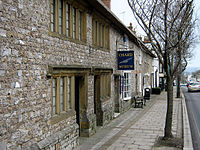
Margaret Grace Bondfield was a British Labour Party politician, trade unionist and women's rights activist. She became the first female cabinet minister, and the first woman to be a privy counsellor in the UK, when she was appointed Minister of Labour in the Labour government of 1929–31. She had earlier become the first woman to chair the General Council of the Trades Union Congress (TUC).
Honiton is a market town and civil parish in East Devon, situated close to the River Otter, 17 miles (27 km) north east of Exeter in the county of Devon. Honiton has a population estimated at 12,154.
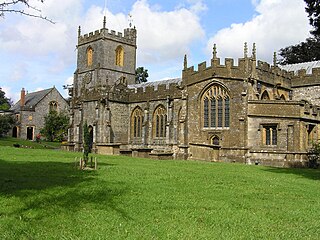
Chard is a town and a civil parish in the English county of Somerset. It lies on the A30 road near the Devon and Dorset borders, 15 miles (24 km) south west of Yeovil. The parish has a population of approximately 14,000 and, at an elevation of 121 metres (397 ft), Chard is the southernmost and one of the highest towns in Somerset. Administratively Chard forms part of the district of South Somerset.

Castle Cary is a market town and civil parish in south Somerset, England, 5 miles (8 km) north west of Wincanton and 8 miles (12.9 km) south of Shepton Mallet, at the foot of Lodge Hill and on the River Cary, a tributary of the Parrett.
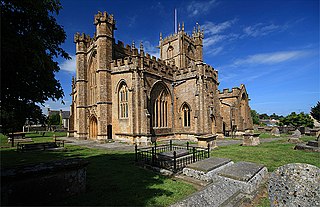
Crewkerne is a town and electoral ward in south Somerset, England, 9 miles (14 km) southwest of Yeovil and 7 miles (11 km) east of Chard. The civil parish of West Crewkerne includes the hamlets of Coombe, Woolminstone and Henley, and borders the county of Dorset to the south. The town is on the main headwater of the River Parrett, A30 road and West of England Main Line railway, in modern times the slower route between the capital and the southwest peninsula, having been eclipsed by the Taunton route.
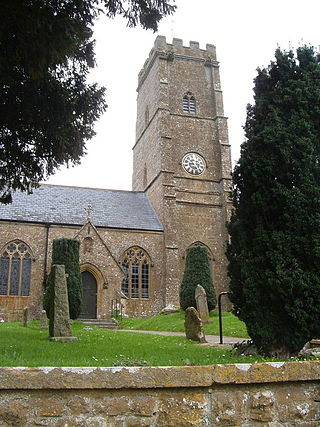
Dowlish Wake is a small village and civil parish in Somerset, England, 2 miles (3 km) south of Ilminster and 5 miles (8 km) northeast of Chard in the South Somerset district. With a population of 277, it has several thatched houses and a pub, the New Inn. Its post office closed in 1991.
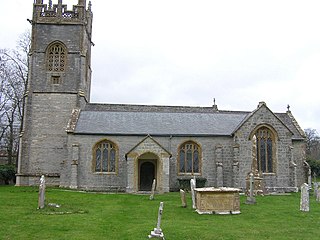
Hatch Beauchamp is a village and civil parish in Somerset, England, situated 5 miles (8.0 km) south east of Taunton. The village has a population of 620.
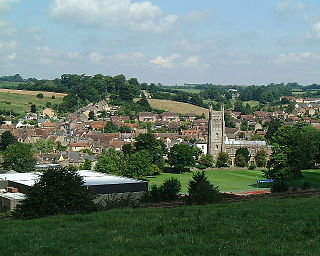
Bruton is a market town, and civil parish in Somerset, England, on the River Brue and the A359 between Frome and Yeovil. It is 7 miles (11 km) south-east of Shepton Mallet, just south of Snakelake Hill and Coombe Hill, 10 miles (16 km) north-west of Gillingham and 12 miles (19 km) south-west of Frome. The town and ward have a population of 2,907. The parish includes the hamlets of Wyke Champflower and Redlynch.

Cricket St Thomas is a parish in Somerset, England, situated in a valley between Chard and Crewkerne and was formerly within the South Somerset administrative district. The A30 road passes nearby. The parish has a population of 50. It is noted for the historic manor house known as Cricket House, and its estate in recent times formerly home to a wildlife park.

John Stringfellow was a British early aeronautical inventor, known for his work on the aerial steam carriage with William Samuel Henson.
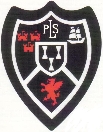
The Perry Street and District League, commonly known as the Perry Street League, is a football competition with clubs from south Somerset, west Dorset and East Devon, England. The league was formed in 1903 by Charles Edward Small, the owner of the Perry Street Lace Works, who is commemorated by the three spools of lace depicted on the league's crest. The badge depicts the three Counties participating in the Perry Street & District Football League as follows: the wyvern of Somerset, three castles for Dorset and the sailing boat for Devon.

Tatworth is a village 2 miles (3 km) south of Chard in the South Somerset district of the county of Somerset, England. It is within Tatworth and Forton civil parish, and the electoral ward of the same name.

Radstock Museum in Radstock, Somerset, England has a range of exhibits which offer an insight into North Somerset life since the nineteenth century.

Winsham is a village and civil parish 4 miles (6 km) south-east of Chard and 6 miles (10 km) from Crewkerne, in the South Somerset district of Somerset, England. The parish, which has a population of approximately 750 residents living in some 335 households, includes the hamlets of Whatley, Bridge, Purtington and Ammerham, and covers an area of approximately 12 square miles (3,100 ha).

Fore Street in Chard, Somerset, England was built in the late 16th and early 17th century, following a fire which destroyed much of the town in 1577.
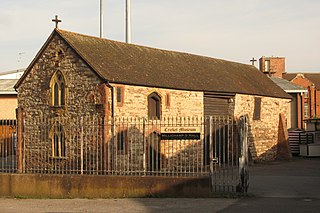
Somerset Cricket Museum in Taunton, Somerset, England, is a small museum housing exhibits on the history of cricket with a particular emphasis on the history of Somerset County Cricket Club.

Chard Prep School is a coeducational private school for children ages 4 to 11 located in the town of Chard in the English county of Somerset.

The Guildhall is a town hall and community building in the town of Chard in the English county of Somerset.
James Gillingham (1839–1924) was a prosthetic limb manufacturer based in Chard, Somerset in the 19th century and one of the first to have photographs taken of his works.
